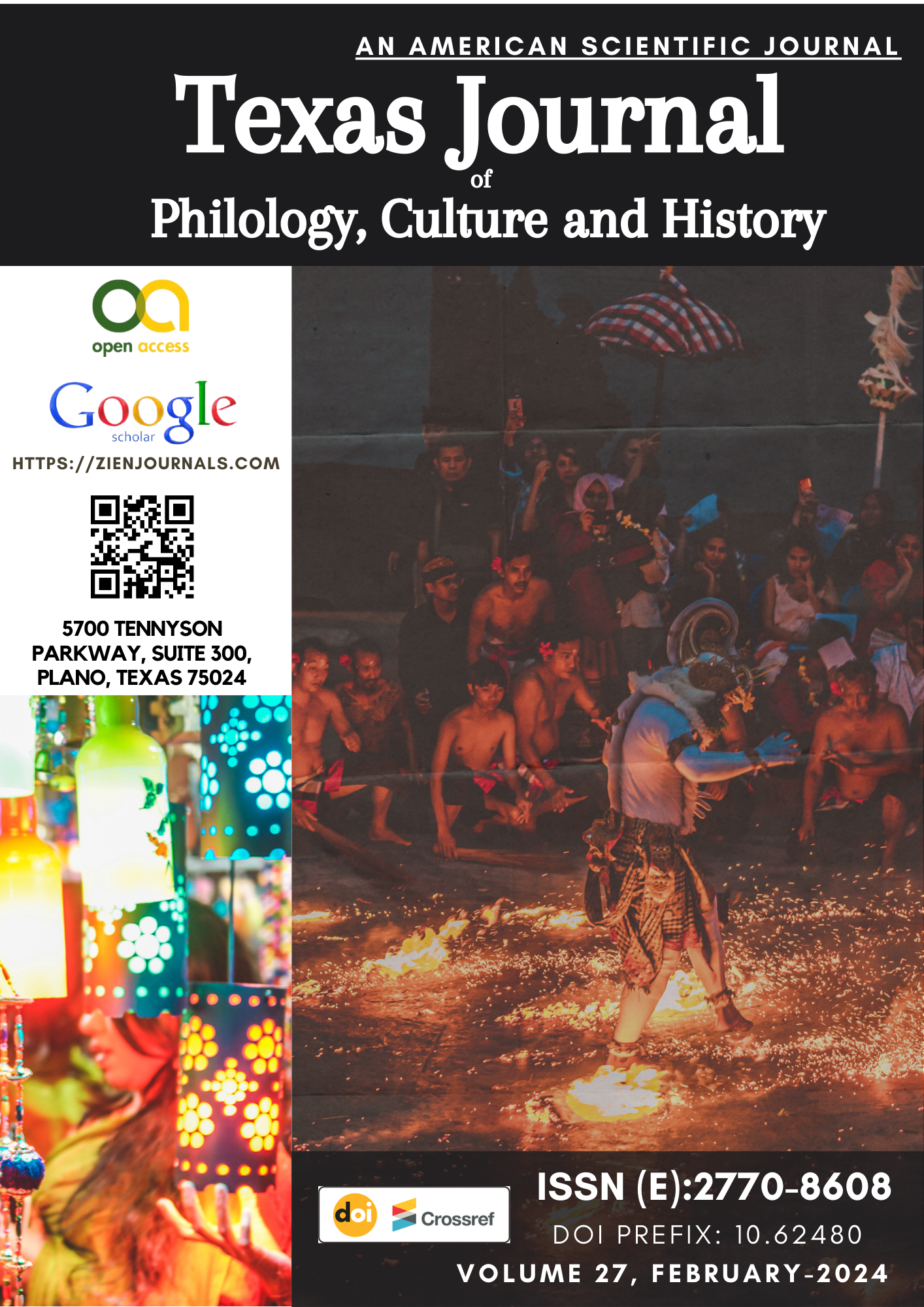Attitude Towards The Filipino Language And Communicative Competence Of Senior High School Students In Samar National School
Keywords:
Attitude, communicative competence, grammatical competenceAbstract
Enhancing communicative competence in the Filipino language classroom is an ongoing endeavor that demands comprehensive understanding and strategic intervention. The recent study conducted at Samar National School (SNS) delved deep into the attitudes and proficiency levels of Senior High School (SHS) students, revealing a multifaceted landscape characterized by both promising strengths and notable areas for improvement. Within this dynamic context, the study uncovered a prevailing positive attitude towards the Filipino language among student-respondents, signaling a fertile ground for linguistic development and cultural engagement. However, compared against this optimism were evident deficiencies in grammatical and linguistic competence, highlighting a pressing need for targeted interventions to fortify foundational language skills. Amidst these challenges, the study also unveiled strengths in discourse and strategic competence, suggesting a nuanced proficiency profile within the student cohort. The correlation identified between students' attitudes towards the Filipino language and their grammatical competence underscores the intricate interplay between affective factors and linguistic proficiency, emphasizing the importance of cultivating a positive disposition towards language learning. The study advocates for the implementation of evidence-based intervention plans that address identified deficiencies while leveraging existing strengths, thereby fostering a more holistic approach to language education that empowers students to navigate effectively in the Filipino language, enriching their educational journey and cultural identity in the process.
References
Salvador, R.T. (2020). Linguistic and Discourse Competence of Senior High School Students: Basis for Remedial Program in English. Universe International Journal of Interdisciplinary Research, 1(2), 182-189. https://uijir.com/wp-content/uploads/2020/08/UIJIR-JULY229.pdf.
Lasala, C.B. (2014). Communicative Competence of Secondary Senior Students: Language Instructional Pocket. Procedia – Social and Behavioral Sciences, 134, 226-237. doi: 10.1016/j.sbspro.2014.04.243.
Al-Shamiry, R.A.M. (2020). Communicative Competence of the Saudi Learners of English at the Faculty of Languages and Translation, King Khalid University. Journal of Language Teaching and Research, 11(3), 446-461. http://dx.doi.org/10.17507/jltr.1103.13.
Salvador, R.T., Lobaton, V.P.Y., & Oliveres, S.M.M. (2023). Communicative Competence of Senior High School Students: Basis for Remedial Program in English. Psych Educ, 6(PEMJ481), 746-750. doi:10.5281/zenodo.7503939.
Tuan, V.V. (2017). Communicative Competence of the Fourth Year Students: Basis for Proposed English Language Program. English Language Teaching, 10(7), 104-122. http://doi.org/10.5539/elt.v10n7p104.
Rochim, A.S.F. (2019). Communicative Competence Components Analysis in Using English through English Interaction Room. Journal of English Language Teaching, 8(1), 78-85. https://www.researchgate.net/publication/338338398_The_Communicative_Competence_Components_Analysis_in_Using_English_through_EIR/link/63cad924d9fb5967c2ef582b/download.
Polatovna, B.N. (2019). Development of Communicative Competence in the Process of Teaching English. European Journal of Research and Reflection in Educational Sciences, 7(12), 161-163. https://www.idpublications.org/wp-content/uploads/2020/01/Full-Paper-DEVELOPMENT-OF-COMMUNICATIVE-COMPETENCE.pdf.
Thuan, P.D. (2021). Attitude and Motivation in Language Learning: A Review. Journal of English Language Teaching and Applied Linguistics, 3(5), 64-72. DOI: 10.32996/jeltal
Imsa-ard, P. (2020). Motivation and Attitudes towards English Language Learning in Thailand: A Large-Scale Survey of Secondary School Students. rEFLections, 27(2), 140-161. https://files.eric.ed.gov/fulltext/EJ1283491.pdf.
Addisu, S.G. & Popescu, M. (2020). Factors Affecting the Attitudes of Students towards Learning English as a Foreign Language. Cogent Education, 7(1), 1-37. DOI: 10.1080/2331186X.2020.1738184.
Ricohermoso, C., Abequibel, B.T., & Alieto, E.O. (2019). Attitude towards English and Filipino as Correlates of Cognition toward Mother Tongue: An Analysis among would-be Language Teachers. Asian EFL Journal Research Articles, 26(6.1), 1-19. https://www.researchgate.net/publication/338711850_Attitude_towards_English_and_Filipino_as_Correlates_of_Cognition_toward_Mother_Tongue_An_Analysis_among_would-be_Language_Teachers/link/5e26c10f299bf1031e27ccf7/download.
Official Gazette. (2023). What is K to 12 Program? https://www.officialgazette.gov.ph/k-12/#:~:text=Aside%20from%20the%20Mother%20Tongue,introduced%20as%20languages%20of%20instruction.
Alonzo, R.I. (2015). Understanding the K to 12 Educational Reform. Philippine Social Sciences Review, 67, 1-15. https://journals.upd.edu.ph/index.php/pssr/article/download/5260/7741/.
Kagawaran ng Edukasyon (DepEd). (2016). K to 12 Gabay Pangkurikulum: Flipino (Baitang 1-10). https://www.deped.gov.ph/wp-content/uploads/2019/01/Filipino-CG.pdf.
de Chavez, A.C. & Metrillo, A.P. (2018). Paggamit ng Wikang Filipino ng mga Mag-aaral sa Paaralan. https://www.academia.edu/40167448/PAGGAMIT_NG_WIKANG_FILIPINO_NG_MGA_MAG_AARALSA_PAARALAN_Batangas_Country_Club.
Ayon, A.J., Barquilla, R., Roma, C., Garcia, A.S. et al. (2019). Isang Pag-aaral sa Antas ng Kaalaman ng mga Mag-aaral sa Baitang 11 ng General Academic Strand sa Wastong Paggamit ng Wikang Filipino ng Our Lady of Fatima University sa Kasanayan sa Pakikipagtalastasan. https://www.academia.edu/38878530/Isang_Pag_aaral_sa_Antas_ng_Kaalaman_ng_mga_Mag_aaral_sa_Baitang_11_ng_General_Academic_Strand_sa_Wastong_Paggamit_ng_Wikang_Filipinong_Our_Lady_of_Fatima_University_sa_Kasanayan_sa_Pakikipagtalastasan.
Tanni, Z.A. (2015). Attitudes toward English among Al-Ouds Open University Students in Tulkarn Branch. World Journal of Education, 5, 139-147. doi: 10.5430/wje.v5n3p139.
Arda, S. & Doyran, F. (2017). Analysis of Young Learners’ and Teenagers’ Attitudes to English Language Learning. International Journal of Curriculum and Instruction, 9(2), 179-197. https://files.eric.ed.gov/fulltext/EJ1207256.pdf.
Ong, J.E.F. (2020). Attitudes of Filipino Senior High School Students towards English: Implications for Teaching English. The Asian Conference on Education 2020, Official Conference Proceedings. https://papers.iafor.org/wp-content/uploads/papers/ace2020/ACE2020_59000.pdf.
Sullera, F.B. (2015). Lawak ng Pagpapahalaga ng mga Estudyante sa Asignaturang Filipino Kaugnay ng Kanilang Akademik Performans. Gradwadong Tesis, Unibersidad ng Foundation, Lungsod ng Dumaguete. https://www.researchgate.net/publication/347951399_Lawak_ng_Pagpapahalaga_ng_mga_Estudyante_sa_Asignaturang_Filipino_Kaugnay_ng_Kanilang_Akademik_Performans/link/5fea1bd845851553a0016712/download.
Calisang, C.P. (2009). Lawak ng Paggamit ng Wikang Filipino ng mga Estudyante at ng mga Guro sa Unibersidad ng Foundation. Gradwadong Tesis, Unibersidad ng Foundation, Lungsod ng Dumaguete.
Choeda, Gyeltshen, T., Daker, S., Gyeltshen, S., Wangmo, & Letho, D. (2020). Communicative Competence of Secondary School Students of Bhutan. Journal of Humanities and Education Development, 2(1), 12-25. https://dx.doi.org/10.22161/jhed.2.1.3.
Geckin, V. (2022). What’s COVID-19 Got to do with my Communicative Competence? Self-Reflections of Pre-Service English Language Teachers in Turkey. Indonesian Journal of English Language Teaching and Applied Linguistics, 6(2), 261-276.
Herwiana & Laili, E.N. (2019). Students’ Attitude towards English Language Learning. Journal of Educational Method and Technology, 2(3), 89-97. https://www.researchgate.net/publication/350049656_Students'_Attitude_Towards_English_Language_Learning/link/60c60946299bf1949f551f25/download.
Rezalou, A. & Oktay, Y. (2021). EFL Students’ Perceptions and Attitudes toward Using Communicative Activities in CLT Classroom. Shanlax International Journal of Education, 9(S2), 112-124. https://doi.org/10.34293/ education.v9iS2-Sep.4376.
Gedamu, A.D. & Kuche, E. (2018). The Relationship between Attitude towards Communicative Language Learning and English Language Achievement among Ethiopian EFL Learners. International Journal of Foreign Language Teaching & Research, 6(21), 11-19. https://www.academia.edu/71823211/The_Relationship_between_Attitude_towards_Communicative_Language_Learning_and_English_Language_Achievement_among_Ethiopian_EFL_Learners.
Downloads
Published
Issue
Section
License

This work is licensed under a Creative Commons Attribution-NonCommercial 4.0 International License.
User Rights
Under the Creative Commons Attribution-NonCommercial 4.0 International (CC-BY-NC), the author (s) and users are free to share (copy, distribute and transmit the contribution).
Rights of Authors
Authors retain the following rights:
1. Copyright and other proprietary rights relating to the article, such as patent rights,
2. the right to use the substance of the article in future works, including lectures and books,
3. the right to reproduce the article for own purposes, provided the copies are not offered for sale,
4. the right to self-archive the article.













